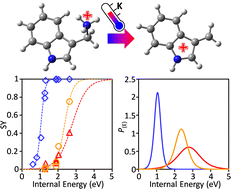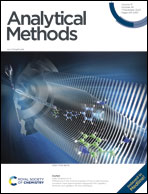Differences in the internal energies of ions in electrospray ionization mass spectrometers equipped with capillary–skimmer and capillary–RF lens interfaces
Abstract
Small metabolites are commonly analyzed using electrospray ionization mass spectrometry (ESI-MS). Although the protonated form of a compound of interest is typically the target ion in ESI-MS, the protonated forms of small metabolites occasionally undergo fragmentation during ion transmission from ambient conditions to vacuum conditions, hindering the unambiguous identification of analyte molecules. To estimate the fragmentation efficiency during ESI processes, the internal energy distribution of the ions (P(E)) must be evaluated. The common approach for the P(E) evaluation is the survival yield method, which uses thermometer ions. In this study, the P(E) of ions produced by an ESI source in a commercial triple quadrupole mass spectrometer equipped with a capillary–skimmer and capillary–RF lens interfaces was evaluated using benzyl ammonium thermometer ions. Furthermore, this study proposes the use of 3-(aminomethyl)indole and related compounds, which have the lowest Eapp values among the reported thermometer ions, to obtain P(E) values of the ions more accurately. Results showed that P(E) strongly depends on whether a capillary–skimmer interface or capillary–RF lens interface was used for ion transport to the vacuum. ESI-MS with a capillary–skimmer interface provided a considerably lower and narrower P(E) of ions than that with a capillary–RF lens interface, thereby producing intact protonated molecules without significant fragmentation of most small metabolites. However, ESI-MS equipped with capillary–RF lens interfaces provided a higher efficiency of ion transmission than ESI-MS equipped with a capillary–skimmer interface, allowing for highly sensitive analysis of metabolites.



 Please wait while we load your content...
Please wait while we load your content...